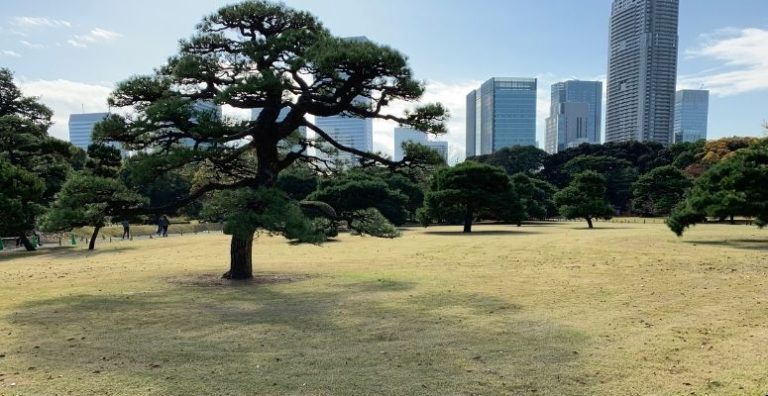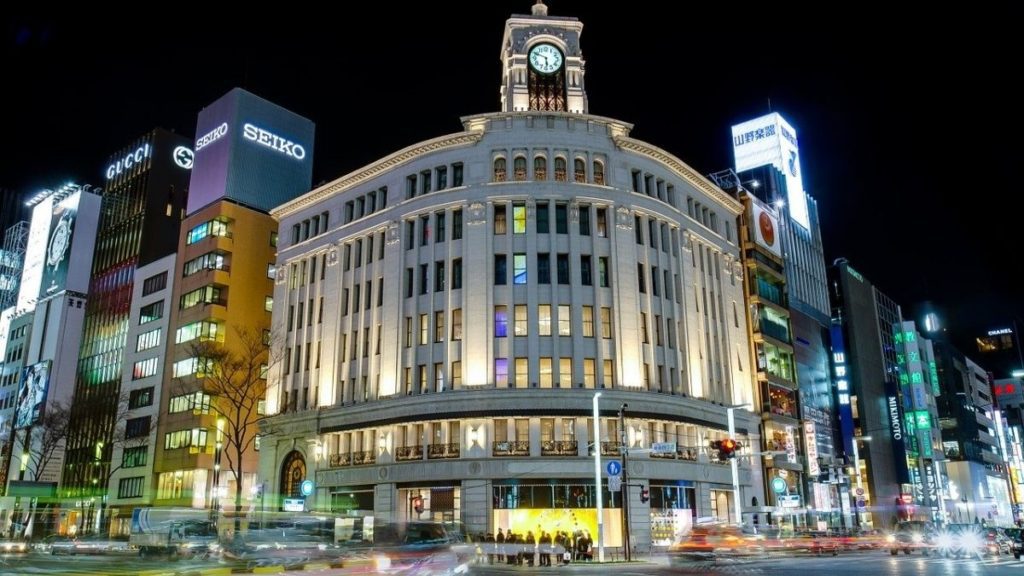Table of Contents
Introduction:
Chuo is one of the 23 wards of Tokyo, located in central Tokyo. The ward is known as Chuo City, and it is also familiar to foreigners as Chuo Tokyo.
Chuo Ward is called Chuo City in English. This ward is surrounded by Minato, Taito, Chiyoda, Sumida, and Koto Wards.
Chuo city has numerous tourist spots, shopping malls, restaurants, and many more world-famous company brands.
Population:147,620
Area:10.21 km2
Famous Attractions:
Chuo Ward has three zones, Kyobashi, Nihonbashi, and Tsukishima.
Kyobashi and Nihonbashi are commercial areas situated east of Tokyo Station.
Ginza and Tsukiji are the most famous in Chuo Ward.
Ginza Kyobashi:
Ginza Kyobashi is the most expensive area in Tokyo. Most world-famous shopping brands have their stores in Ginza, such as Carolina Herrera New York, Chanel, Louis Vuitton, Saint Laurent, and Dior.
Besides, Austrian Riedel, Swarovski, and Italian Gucci have stores in Ginza.
On the other hand, electronic retail stores are not lagging here. Numerous electronic stores such as Apple Store, Sony, and Ricoh have big showrooms in Ginza.
As a result, the Chuo Tokyo area became more expensive and famous because of local and International favorite company stores and central location.
Heart of Tokyo & Japan
Above all, there is a saying that Ginza is the belly bottom of Japan as well as Tokyo. It is not only because of its economic value but also because it is in the middle.
Some of the tourists who are new to Tokyo may not be familiar with famous Japanese companies. But a few minutes of study can give a clear idea about the companies that will help with shopping in Japan.
As a Tokyo center, the most famous Japanese company fashion brands have stores in Ginza, such as Matsuya, Matsuzakaya, Mitsukoshi, Wako, Seibu, and Hankyu shopping centers.
Special priority for tourists on the weekend in Ginza:
Japan is famous for its tourism destination all over the world. It is not only because Japan is a beautiful country but also because of its tourist facilities.
Besides, the people of Japan always welcome tourists who visit Japan. Japanese welcoming mentality made Japan a travel destination for millions of people year after year.
Similarly, as Tokyo is the capital of Japan, tourists always feel at home. At the same time, Tokyo always shows respect to tourists and takes care of them.
As an example, Ginza is worth mentioning here. Ginza keeps close all kinds of vehicles operating on the main street every Saturday and Sunday from 12:00-5:00 pm so that tourists and pedestrians can enjoy their shopping in Ginza.
Tsukiji Hongan-ji:
It is a Jodo Shinshu Buddhist Temple adjacent to Tsukiji station on Hibiya Line.
According to history, the predecessor of Tsukiji Hongan-ji was the temple of Edo-Asakusa Gobo.
Edo-Asakusa Gobo was built in 1617 in Asakusa and burned during a city fire in 1657. However, the governor refused to allow the temple to be rebuilt in Asakusa; instead, it moved to Tsukiji.
Above all, it is a historic Buddhist Temple and worth visiting.
Besides religious matters, it is worth visiting to observe the difference between the present and a hundred years ago, Tsukiji. You can view a picture that was drawn in 1858.
Namiyoke Inari Shrine:
It is a Shinto Shrine. It is located in Tsukiji, Chuo Tokyo area.
Namiyoke Inari Shrine means ‘protection from waves.’
This Shrine is an Inari (god of foxes, fertility, rice, tea, sake, agriculture, and industry) Shrine.
However, it is worth visiting to study the Japanese Shinto Shrine.
It is a traditional Kabuki Theatre in Tokyo. Kabuki is very popular in Japan.
Besides, Kabuki has been carrying Japanese traditional culture century after century. Kabuki’s popularity never goes down; instead, it is getting famous day after day to the young generation.
The Kabuki-za Theater carries a traditional Japanese house-shape. To experience Japanese Kabuki drama, Kabuki-za is a perfect choice.
Nihonbashi area:
‘Cho’ mostly finishes the names of the areas, especially in Nihonbashi areas in Tokyo.
Some places in Nihonbashi and Ginza areas with Cho, such as Bakurocho,Hamacho, Hakozakicho Hamamatsucho, Kodemmacho, Kayabacho.
Tokyo City Air Terminal (T-CAT) is one of the famous buildings here, situated in Hakozakicho.
Bank of Japan:
Bank of Japan Headquater is situated in Kongokucho in Nihonbashi. It is the Central Bank of Japna.
However, many tourists take a picture of the Headquater every day from outside. It is worth keeping a picture of the Bank of Japan Headquater in the digital photo file as a memory of the Tokyo trip.
Tokyo Stock Exchange:
Besides, the Bank of Japan, the Tokyo Stock Exchange, is located in Kabutocho.
The Tokyo Stock Exchange is open five days a week(Monday-Friday), 9 am -4:30 pm. Trading starts from opening to until lunchtime( 11:30 am) and 12:30-3 pm.
The Stock building is open for all during the trading hours. For English speakers, the English guide is available from 1:00 pm-2:00 pm.
However, if you are enthusiastic about the Japanese economy, never miss visiting the Japanese Stock Exchange.
At the same time, Japan is the third-largest economy, and Japan Stock Exchange is the economy’s primary key. It is worth visiting once, at least while you are in Tokyo.
Besides, there’s a very famous Shinto Shrine named Suitengu Shrine. Women pray for safe conception and birth.
Amazake Yokocho:
Japanese Amazake is sweet Sake or sweet wine. It is a small old Japanese fashioned street situated in Nihonbashi nearby Sumida River.
Besides Sake, traditional Japanese restaurants, snacks, and retail outlets are available here.
Most importantly, some cultural experts strongly recommend the foreign tourists visit the street as a cultural tour in Chuo Tokyo.
Tsukishima Area:
Tsukishima literally means ‘moon island.’ But Chuo Tokyo Tsukishima means ‘constructed island.’
It is an artificial island along with the Sumida River on Tokyo Bay. It is a beautiful place in Tokyo with fewer crowds.
There’s a shrine that was built in 1590 named Sumiyoshi Shrine in the Tsushima area.
Besides, Tsukishima is also famous for the Monjayaki restaurant. Monjayaki is one kind of Japanese style pan-fried batter.
Tsukishima Monja Street:
Tsukishima Monja Street is a street where Monja is very famous. Monja is a Short form of Monjayaki, a pan-fried batter dish.
Monja is a famous local food, a dish with seafood and chopped vegetables. Every table has an iron pan where customers cook by themselves and eat.
Monja Street has over 70 Monjayaki restaurants. Most of the restaurants serve the English menu.
Besides, most of the restaurants keep English speaking staff to take of non-Japanese gue
Tsukishima Daiichi Jido Park:
As I mentioned above, that Tsukishima is an artificial Island. But still, there is a small park in Tsukishima where children can play.
Besides, often tourists take some rest here while they pass by the park.
Tsukishima Public bath:
Are you feeling tired after roaming day long in Tokyo? Probably thinking it would be good if you could take a bath now?
You can take a bath nearby In Tsukishima. Check where you are now.
Besides, bath towels are available here. Check the address below to take a bath now in Tsukishima.
Check the address:
Address:
Tsukishima-onsen
3-4-5 Tsukishima, Chuo City, Tokyo
Hamarikyu Gardens:
It is an attractive and large public park in the Chuo Tokyo, located in the Sumida River estuary.
The park features seawater ponds that change the level with the tides. Besides, the waves keep the pond’s water clean.
Hamarikyu Gardens is one of the Edo-style gardens in Tokyo. On April 1, 1946, it was opened to the public.
According to history, it was almost destroyed by the great Kanto earthquake. The park was a place of the Royal family during the Edo Period, a duck hunting ground.
Most importantly, the central ducks hunting spot where Royal family members used to hunt. It is still being preserved for historical purposes.

Hamarikyu Garden is full of nature. It has ponds, Japanese-style gardens, historic hunting spots, and flower gardens.
It is worth visiting any season. The park is one of the most easily accessible spots in Tokyo.
Learn more about Hamarikyu Garden.
Restaurants:
Japanese food is popular in the world. You may like to taste the Japanese style of food. There are many famous restaurants in the Chuo Tokyo area.
However, never forget to make a booking online because Chuo is a business and tourist spot; without making a booking, you may not be able to get seats in the restaurants.
You can find different types of restaurants here.
Book reasonable Hotel:
